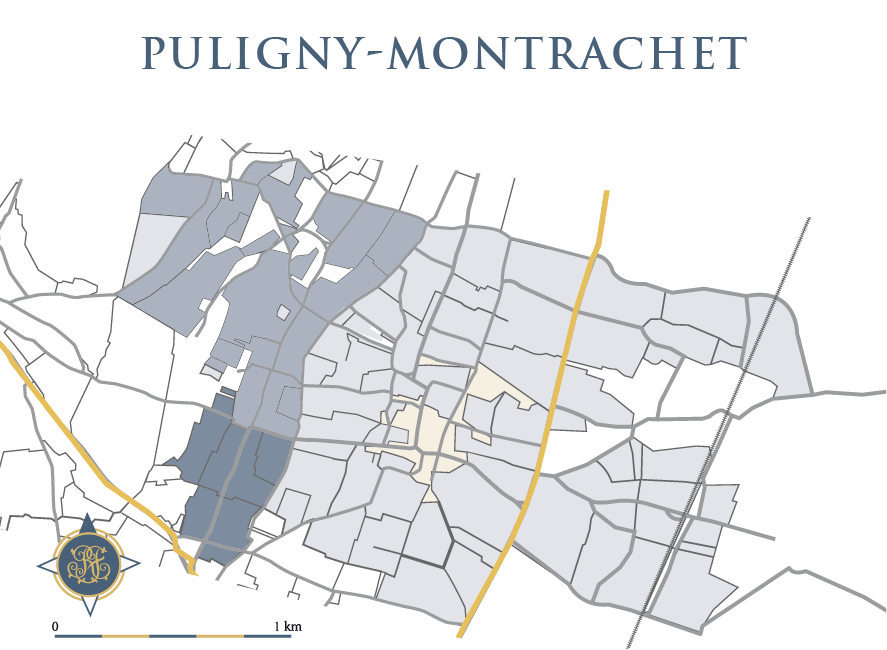Production area
Puligny-Montrachet is a village on the Côte de Beaune, located in the area producing the finest white wines of Burgundy: the Golden Triangle, which is demarcated by the villages of Meursault, Puligny-Montrachet and Chassagne-Montrachet. The village supposedly holds its name from the Gallo-Roman era, when the first people settled and named it Puliniacus - the marsh house. The second name "Montrachet" was attached only in the end of the 19th century, to have a link with the Grand Cru that can be produced in the village. The appellation produces almost all white wines, with 17 climats classified as Premier Cru and 5 Grands Crus.
Origins
The soil is mainly composed of limestone with a very typical ocher colour. The subsoil is also composed of marly layers (mix of clay and limestone) that play a great part in giving the wines under the appellation their structure. The vines are located in the plain with a South-eastern exposure which protect them from the North wind and is ideal to gather the most amount of sunlight and ensure a good maturity/concentration of the grapes.
Varietal
100% Chardonnay
Tasting notes
COLOR : Shiny white gold.
NOSE : Aromas of citrus enhanced by delicately toasted vanilla notes.
PALATE : Fresh and light in the mouth, with a good minerality and discreet woody notes. The finale is long and charming.
Vinification and maturing
Grapes are harvested by hand and carefully sorted to respect our rigorous selection process. Once at the winery, the grapes go in a bladder press: squeezed from the inside of the press, they receive an equal amount of pressure, ensuring the best quality of juice with a minimal exposure to oxygen. The vinification and ageing take place in wooden vats and barrels with a proportion of 20% new oak that will give more structure to the wine and bring soft tannins as well as woody notes. The wine is aged on lees for 10 to 12 months; keeping the lees and stirring them occasionnaly will developp the complexity and aromas of the wine.
Food and wine pairing
This wine will be perfect paired with refined dishes such poultry in sauce, veal fried with mushrooms, foie gras, lobster, crawfish, and grilled or fried sea-fish. On the cheese-board, its natural allies are goat cheeses, Reblochon, or soft-centred cheeses like Brie de Meaux.
Serving suggestions
11 to 13°C
Ageing potential
8 years
Vintage : 2018
Quality and quantity for an exceptional vintage!
After a very mild winter, perhaps too mild, this vintage was marked by two contrasting periods. The spring was sunny and milk, with no frost, although there were some localized storms with significant episodes of hail that hit certain plots hard on the Côte de Nuits in June. Then the summer was very dry and very hot, blocking the ripening process in some areas. the harvest began with the Côte de Beaune whites at the end of August. Harvesting was early and was exceptionally abundant. The wonderfully healthy crop promised great potential for producing highly sophisticated wines.
Where to find us
21190 Meursault
France
Fax: +33 (0) 3 8 0 2 1 6 9 2 9








 PDF file
PDF file
